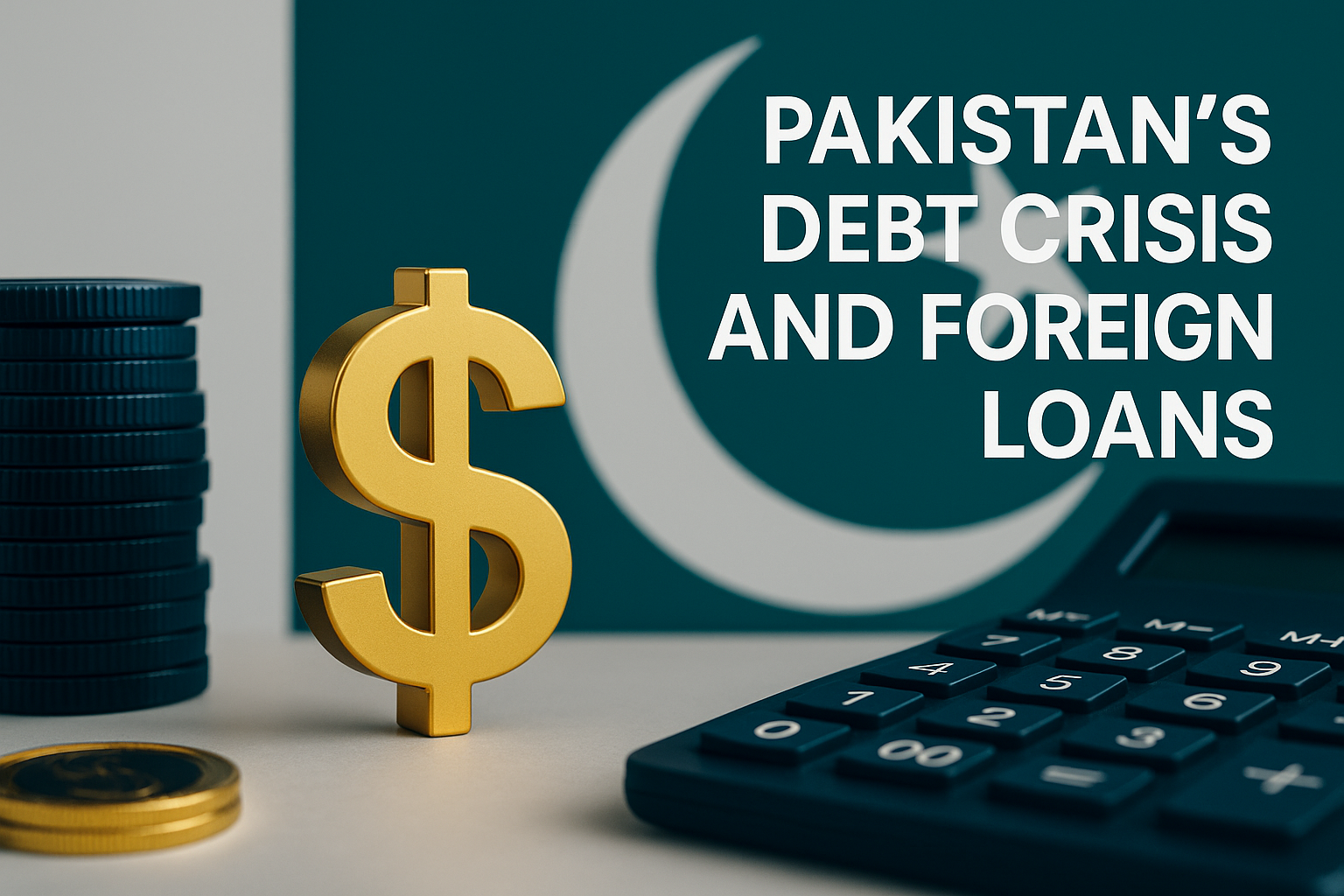Pakistan’s Debt Crisis and Foreign Loans Deepen Economic Woes
Advanced | August 1, 2025
✨ 혼자서 기사를 소리 내어 읽거나 튜터를 따라 각 단락을 반복해서 읽으세요. 레벨...
Pakistan Debt Crisis and Foreign Loans: Mounting Burden
A Closer Look at the Numbers
Pakistan’s economy faces a significant challenge, marked by a record \$26.7 billion in foreign loans over the last fiscal year (FY 2024-25). This heavy borrowing underscores the nation’s increasing reliance on external financial support. Alarmingly, almost half of these new loans serve debt rollovers, essentially repaying old debts with new ones, rather than funding new development projects. In fact, only about 13% (\$3.4 billion) of these funds target project financing, meaning most simply cover budgetary needs and foreign exchange reserves. Such practices do not generate revenue for future debt servicing, creating a precarious cycle.
The Cost of Borrowing
Pakistan now faces a massive external debt repayment bill of over \$23 billion for the current fiscal year (FY 2025-26), which began July 1, 2025. Failure to meet these obligations could lead to a sovereign default. By March 2025, the country’s total public debt reached PKR 76.01 trillion, comprising significant domestic and external components. Consequently, debt servicing consumes nearly half (46.7%) of Pakistan’s entire federal budget for 2025-26. Major lenders include multilateral institutions and countries like Saudi Arabia, China, and the IMF. Pakistan’s foreign exchange reserves, though recovered to \$14.5 billion by June 2025, primarily consist of refinanced loans and new borrowings, reflecting the ongoing struggle.
Broader Economic Implications
Challenges for Future Growth
Compounding these issues, the nation’s debt-to-GDP ratio has surpassed sustainable levels, and financing requirements will likely remain above 15% of GDP for years. A “junk status” credit rating severely limits Pakistan’s access to international capital markets, forcing it to accept high interest rates. The State Bank of Pakistan recently maintained its policy rate at 11% in July 2025, balancing easing consumer prices with a worsening inflation outlook due to energy price hikes.
Navigating a Difficult Path
Pakistan also struggles to manage significant outstanding payments, reaching PKR 423 billion by June 2025, to Chinese power producers under the China-Pakistan Economic Corridor (CPEC). To address the energy sector’s circular debt, the government actively seeks new loans, including PKR 1.3 trillion from commercial banks.
Vocabulary
- Underscored – Emphasized or highlighted.
- Example: “The report underscored the urgency of climate action.”
- Reliance – The state of depending on someone or something.
- Example: “The country’s reliance on imported oil made it vulnerable.”
- Rollovers – The renewal of a debt or financial arrangement.
- Example: “Many businesses use debt rollovers to manage their finances.”
- Earmarked – Designated for a particular purpose.
- Example: “The government earmarked funds for infrastructure projects.”
- Multilateral – Involving more than two groups or countries.
- Example: “Multilateral institutions provide loans to developing nations.”
- Sovereign default – Failure of a government to pay its debts.
- Example: “Economists worried about a potential sovereign default if the crisis worsened.”
- Precarious – Dangerously likely to fall or collapse.
- Example: “His financial situation remained precarious after losing his job.”
- Eases – Becomes less severe or intense.
- Example: “The new policies aim to ease the burden on small businesses.”
- Outstanding – Not yet paid or settled.
- Example: “She still had several outstanding invoices to process.”
- Circular debt – A chain of unpaid dues within a sector.
- Example: “Circular debt in the energy sector often leads to power outages.”
Discussion Questions (About the Article)
- What is the primary reason for Pakistan’s debt crisis and foreign loans reliance?
- How do “debt rollovers” contribute to financial challenges?
- What percentage of the federal budget is spent on debt servicing?
- Why does a “junk status” rating worsen the situation?
- What other major financial challenge exists, especially with CPEC?
Discussion Questions (About the Topic)
- What are potential long-term consequences for heavy reliance on foreign loans?
- If you were an economic advisor, what two immediate steps would you recommend?
- How does a country’s credit rating impact investment?
- What role do institutions like the IMF play?
- How do global energy prices affect debt situations?
Related Idiom
Living beyond your means
- Meaning: Spending more money than you earn; incurring debt to maintain a lifestyle you cannot afford.
- Example: “Many developing nations find themselves living beyond their means when they rely heavily on external borrowing without sufficient revenue generation.”
📢 Want more tips like this? 👉 Sign up for the All About English Mastery Newsletter! Click here to join us!
Want to finally Master English but don’t have the time? Mastering English for Busy Professionals is the course for you! Check it out now!
Follow our YouTube Channel @All_About_English for more great insights and tips
This article was inspired by: Times of India, July 23, 2025.


